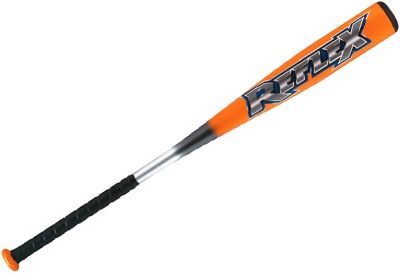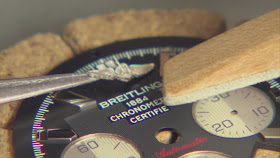
Wednesday, October 31, 2012
Tuesday, October 30, 2012
28 - Journal Bearings
28-1 Introduction
28-2 Bearing and Journal Configurations
28-3 Bearing Material and Selection Criteria
28-4 Pressure Equation for a Lubricating Film
28-5 Journal Bearing Performance
28-6 Liquid-Lubricated Journal Bearings
28-7 Gas-Lubricated Journal Bearings
28-8 Hydrostatic Journal Bearing Design
28-2 Bearing and Journal Configurations
28-3 Bearing Material and Selection Criteria
28-4 Pressure Equation for a Lubricating Film
28-5 Journal Bearing Performance
28-6 Liquid-Lubricated Journal Bearings
28-7 Gas-Lubricated Journal Bearings
28-8 Hydrostatic Journal Bearing Design
Monday, October 29, 2012
Giant Magellan Telescope

Using the aluminum layer as the mirror, because it is more durable and less expensive to maintain.
A Super Jumbo Wing of A380

BBC. A Super Jumbo Wing of A380 - How to Build.
Wing Dimension Measure
Sunday, October 28, 2012
Saturday, October 27, 2012
Friday, October 26, 2012
Fuselage

Thursday, October 25, 2012
29 - Couplings
29-1 General
29-2 Rigid Couplings
29-3 Flexible Metallic Couplings
29-4 Flexible Elastomeric Couplings
29-5 Universal Joints and Rotating-Link Couplings
29-6 Methods of Attachment
29-2 Rigid Couplings
29-3 Flexible Metallic Couplings
29-4 Flexible Elastomeric Couplings
29-5 Universal Joints and Rotating-Link Couplings
29-6 Methods of Attachment
Wednesday, October 24, 2012
Assembly and Test

Tuesday, October 23, 2012
Monday, October 22, 2012
Saturday, October 20, 2012
1 - The Structure of Metals
1.1 Introduction
1.2 The Crystal Structure of Metals
1.3 Deformation and Strength of Single Crystals
1.4 Grains and Grain Boundaries
1.5 Plastic Deformation of polycrystalline Metals
1.6 Recovery, Recrystallization, and Grain Growth
1.7 Cold -, Warm -, and Hot - Working
1.2 The Crystal Structure of Metals
1.3 Deformation and Strength of Single Crystals
1.4 Grains and Grain Boundaries
1.5 Plastic Deformation of polycrystalline Metals
1.6 Recovery, Recrystallization, and Grain Growth
1.7 Cold -, Warm -, and Hot - Working
30 - Clutches and Brakes
30-1 Types, Uses, Advantages, and Characteristics
30-2 Torque and Energy Considerations
30-3 Temperature Considerations
30-4 Friction Materials
30-5 Torque and Force Analysis of Rim Clutches and Brakes
30-6 Band and Cone Brakes and Clutches
30-7 Disk Clutches and Brakes
30-8 Electromagnetic Types
30-9 Actuation Problems
30-2 Torque and Energy Considerations
30-3 Temperature Considerations
30-4 Friction Materials
30-5 Torque and Force Analysis of Rim Clutches and Brakes
30-6 Band and Cone Brakes and Clutches
30-7 Disk Clutches and Brakes
30-8 Electromagnetic Types
30-9 Actuation Problems
Thursday, October 18, 2012
Wednesday, October 17, 2012
Tuesday, October 16, 2012
Monday, October 15, 2012
Photo

Preface

Commanders are responsible for bring this publication to the attention of Air Force all personnel cleared for operation of subject aircraft.
2 - Mechanical Behavior
2.1 Introduction
2.2 Tension
2.3 Compression
2.4 Torsion
2.5 Bending (Flexure)
2.6 Hardness
2.7 Fatigue
2.8 Creep
2.9 Impact
2.10 Failure and Fracture of Materials in Manufacturing and Service
2.11 Residual Stresses
2.12 Work, Heat, and Temperature
2.2 Tension
2.3 Compression
2.4 Torsion
2.5 Bending (Flexure)
2.6 Hardness
2.7 Fatigue
2.8 Creep
2.9 Impact
2.10 Failure and Fracture of Materials in Manufacturing and Service
2.11 Residual Stresses
2.12 Work, Heat, and Temperature
2. Atomic Structure and Interatomic Bonding
2.1 Introduction
2.2 Fundamental Concepts
2.3 Electrons in Atoms
2.4 The Periodic Table
2.5 Bonding Forces and Energies
2.6 Primary Interatomic Bonds
2.7 Secondary Bonding or van der Waals Bonding
2.8 Molecules
2.2 Fundamental Concepts
2.3 Electrons in Atoms
2.4 The Periodic Table
2.5 Bonding Forces and Energies
2.6 Primary Interatomic Bonds
2.7 Secondary Bonding or van der Waals Bonding
2.8 Molecules
31 - Belt Drives
31-1 General
31-2 Flat-Belt Drive
31-3 V-Belt Drive
31-4 Synchronous-Belt Drive
31-5 Other Belt Drives
31-6 Comparison of Belt Drives
31-2 Flat-Belt Drive
31-3 V-Belt Drive
31-4 Synchronous-Belt Drive
31-5 Other Belt Drives
31-6 Comparison of Belt Drives
Sunday, October 14, 2012
Engine

thrust is approximately 29,000 pounds.
Word Roots I

The Least You Should Know about Vocabulary Building. Fifth Edition.
Do you know EU always means good or well ??
Do you know that any word containing PHIL will have something to do with love ??
Saturday, October 13, 2012
Friday, October 12, 2012
Wednesday, October 10, 2012
3 - Physical Properties of Materials
3.1 Introduction
3.2 Density
3.3 Melting Point
3.4 Specific Heat
3.5 Thermal Conductivity
3.6 Thermal Expansion
3.7 Electrical, Magnetic, and Optical Properties
3.8 Corrosion Resistance
3.2 Density
3.3 Melting Point
3.4 Specific Heat
3.5 Thermal Conductivity
3.6 Thermal Expansion
3.7 Electrical, Magnetic, and Optical Properties
3.8 Corrosion Resistance
32 - Chain Drives
32-1 Types, Uses, and Characteristics
32-2 Roller Chains : Nomenclature and Dimensions
32-3 Selection of Roller-Chain Drives
32-4 Lubrication and Wear
32-5 Engineering Steel Chains : Nomenclature and Dimensions
32-6 Selection of Offset-Sidebar-Chain Drives
32-7 Silent Chains : Nomenclature and Dimensions
32-8 Selection of Silent-Chain Drives
32-2 Roller Chains : Nomenclature and Dimensions
32-3 Selection of Roller-Chain Drives
32-4 Lubrication and Wear
32-5 Engineering Steel Chains : Nomenclature and Dimensions
32-6 Selection of Offset-Sidebar-Chain Drives
32-7 Silent Chains : Nomenclature and Dimensions
32-8 Selection of Silent-Chain Drives




































.jpg)



